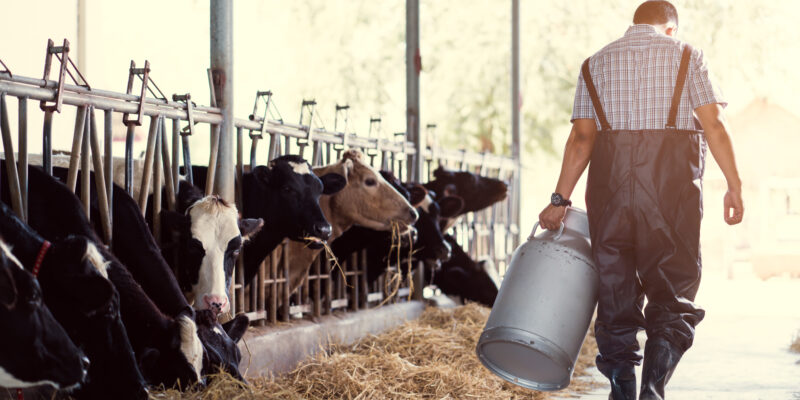The Agriculture, Forestry, and Fishing sector consistently ranks as the most dangerous sector to work in, both in terms of non-fatal and fatal workplace injuries. The top causes of fatal injury occur when people are struck by a moving vehicle or injured by livestock. Injuries are also commonly caused when people fall from a height, are struck by a moving object, or make contact with moving machinery.
It is crucial that we all do what we can to reduce the risk of these incidents occurring on farms to protect individuals, businesses and loved ones.
What is the law?
The Health and Safety at Work etc Act 1974 and The Management of Health and Safety at Work Regulations 1999 are there to protect the health and safety of anyone present on your farm. Your most important obligations are:
- You must regularly conduct risk assessments to identify hazards.
- For every risk you identify, you must make employees aware of it, and give them training on how to deal with the risk.
- You must provide your employees with any safety equipment and protective clothing they need to carry out their work, free of charge.
- Provide and maintain safe equipment, machinery and systems appropriate for the job at hand.
- You must provide your employees with basic welfare facilities, such as a toilet, washing facilities and drinking water.
- You must provide your employees with first-aid facilities.
- You must have suitable insurance to cover injuries at work.
Who do I need to protect?
You have a duty to protect your employees, but what about yourself? Almost half of all fatalities involve the self-employed, therefore it is important to consider your own safety on the farm. You also need to think about:
- Casual workers and contractors
- Visitors (sales reps, delivery drivers etc)
- Family and friends
- Members of the public
What if the worst happens?
If an incident was to occur, individuals will be judged with the benefit of hindsight, and if prosecuted can face an unlimited fine or in some circumstances imprisonment. There may also be a compensation payment to anyone who suffers an accident on your farm. If the incident sadly leads to a fatality, there will be a fatal accident inquiry to establish what happened and what could have been done to prevent it.
What can I do?
In addition to ensuring your legal obligations are met, it is essential to have evidence that measures have been implemented other than your word. Therefore, it is important to record risk assessments and any steps taken to reduce risks in the workplace.
Appropriate training for all should be provided before beginning work on the farm, as well as, throughout their employment or contract.
Learn from your mistakes. If you walk away thinking “that was lucky” make changes so you don’t have to rely on luck next time. Ensure that everybody knows they have a role to play in preventing accidents, and what to do if there is one.
Provide the equipment that is needed for a particular job and make sure it is in serviceable condition. Make sure there are suitable signs warning of dangers. Remember a picture is worth a thousand words, particularly to the young.
Finally, make sure that you have adequate insurance cover for yourself, any employees and for public liability.
It may not be possible to eliminate the risk of injury completely, but it can certainly be reduced. If you are in any doubt, there are sources of advice and training on how to recognise and reduce risk. It may also be beneficial to contact a consultant to visit your farm to carry out a risk assessment on your behalf – it may surprise you what they see that you don’t and given the high level of risks, you certainly can’t be too careful.
If you have any queries you would like to discuss further, please get in touch with myself or a member of our Land & Rural Business team.


